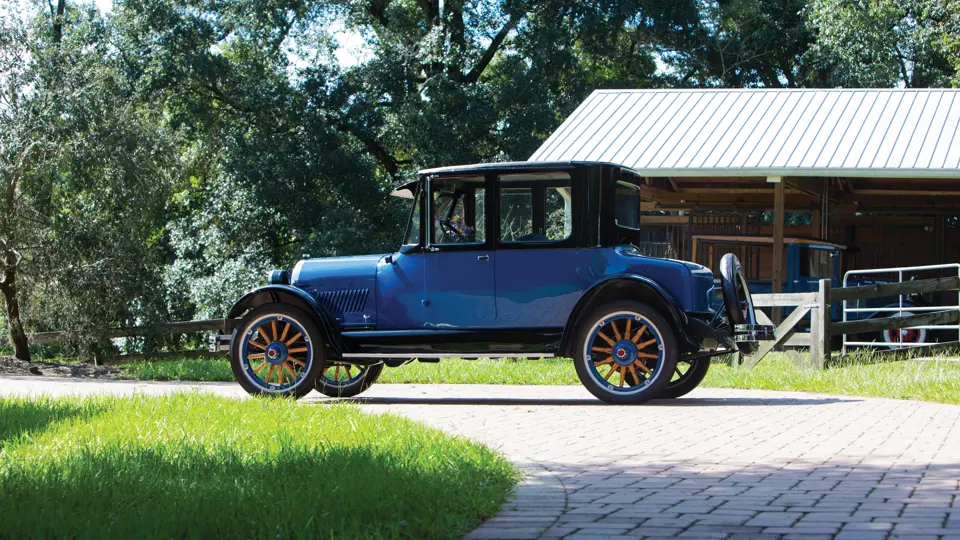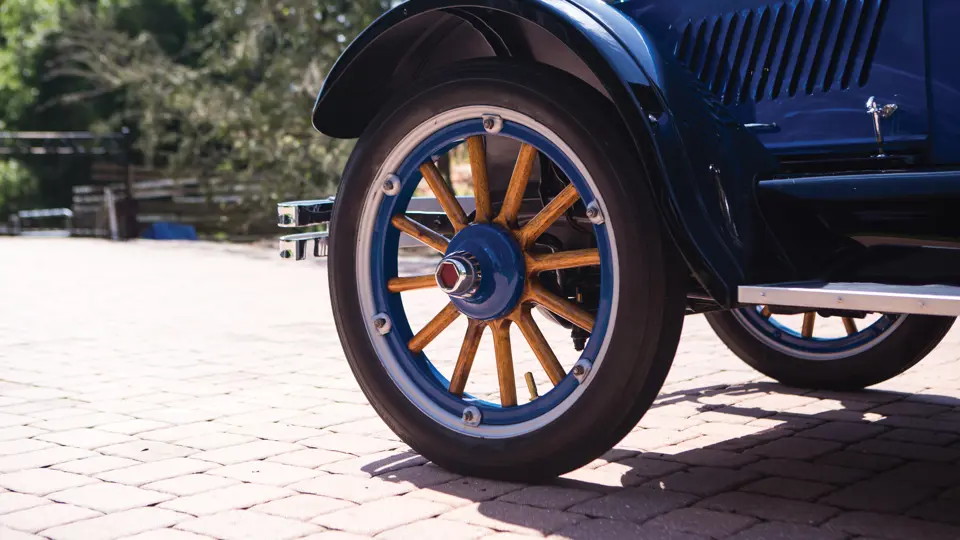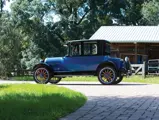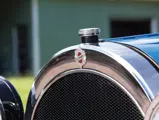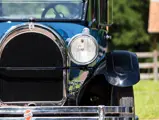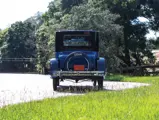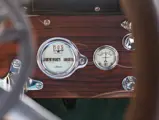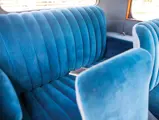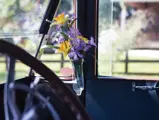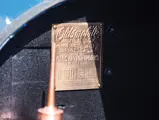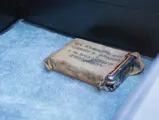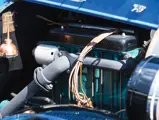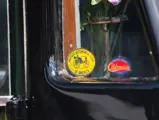
1923 Oldsmobile Model 43-A Brougham
{{lr.item.text}}
$19,250 USD | Sold
{{bidding.lot.reserveStatusFormatted}}
- Final year of four-cylinder Oldsmobile production
- A rare body style; one of just 926 produced for 1923
- Recently completed restoration
- Includes owner’s manual and period Johnson & Johnson first-aid kit
43 hp, 224 cu. in. inline four-cylinder, three-speed manual transmission, front and rear semi-elliptical leaf-spring suspension, and rear-wheel mechanical brakes. Wheelbase: 115 in.
The year 1923 was the final model year for the 43-A, which was offered by Oldsmobile starting in 1921. It would also become Olds’ last four-cylinder model until the 1976 Starfire some 53 years later. Furthermore, Oldsmobile discontinued truck production that year, as its Model 47, a V-8 powered car, never sold well. By the end of the year, the company produced only six-cylinder cars, and it was 1929 before the maker returned with another V-8–equipped model.
The Model 43-A was Olds’ top seller in 1923, with 19,114 examples produced. It was offered in three different touring models, a roadster, and four separate closed versions. Prices broke the $1,000 barrier for the first time, as the least expensive touring model was offered at $975. The four-passenger Brougham or Opera Coupe began at $1,475, and only 926 were produced. The Opera Coupe and its tall body allowed for easy entry and exit while wearing formal clothes and a top hat—perfect for a night on the town in the Roaring Twenties. Access to the rear seat was made available via a folding front seat. A compartment adjacent to the rear seat was rumored to be used for storage of champagne and other consumables during Prohibition.
Standard features on closed Model 43-As included artillery-type wheels made of hickory, a dome light, and a heater. A grate in the floor allowed for the transfer of heat from the exhaust piping. While Fisher became the sole source of bodies late in the model year, it is thought that some closed bodies were sourced from the Melbourn Body Works in Toledo, Ohio. Regardless, all enclosed bodies were constructed of steel panels over a frame of seasoned hardwood. While open cars used leather interiors, closed cars used high-grade fabrics. Exterior bright trim was plated in nickel.
All examples also featured a floating-type rear axle utilizing spiral bevel gears with a differential housing and wheels that rolled on Hyatt bearings. The final drive ratio was 4.7:1. A four-cylinder engine of 224 cubic inches included aluminum-alloy pistons while offering 43 horsepower, and all cars featured Auto Lite starting and lighting along with a Remy distributor.
This unusual example of a rare body style has been freshly restored. Included in the sale is its original owner’s manual along with an interesting period Johnson & Johnson first-aid kit labeled “Automobile Accident Case No. 8.” The consigner reports that it starts easily, runs smoothly, and, overall, drives nicely.
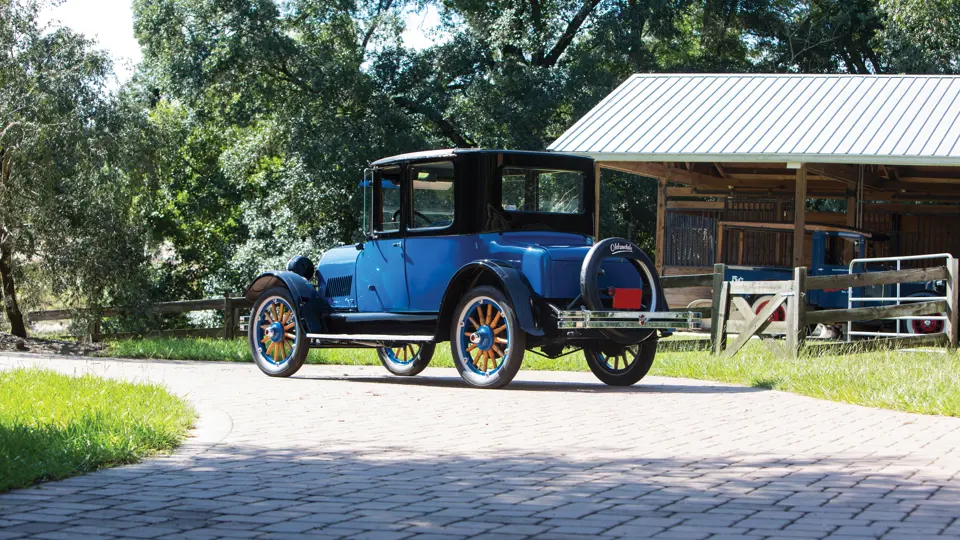
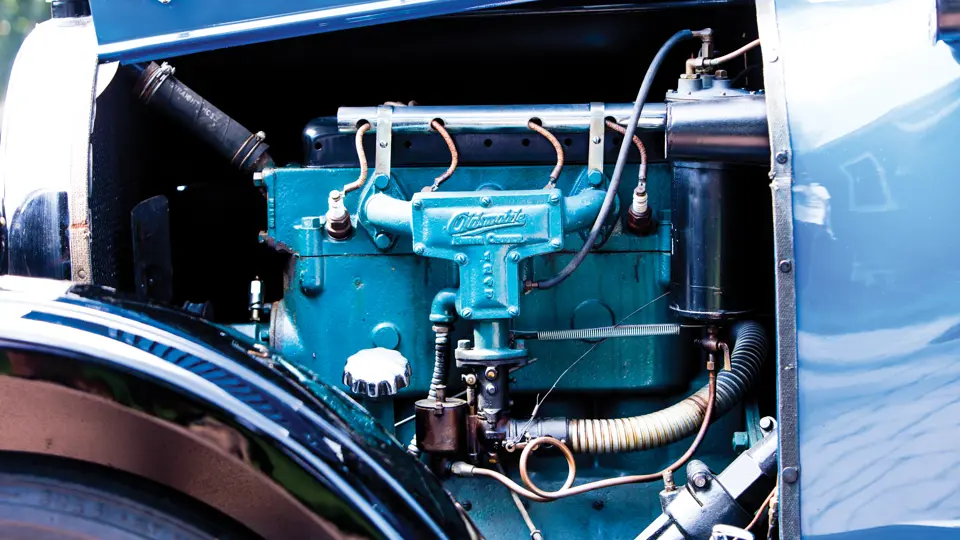


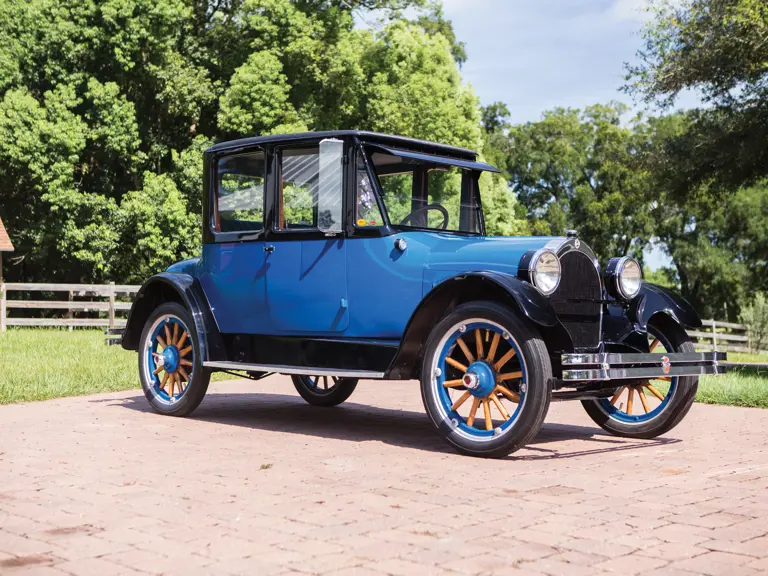
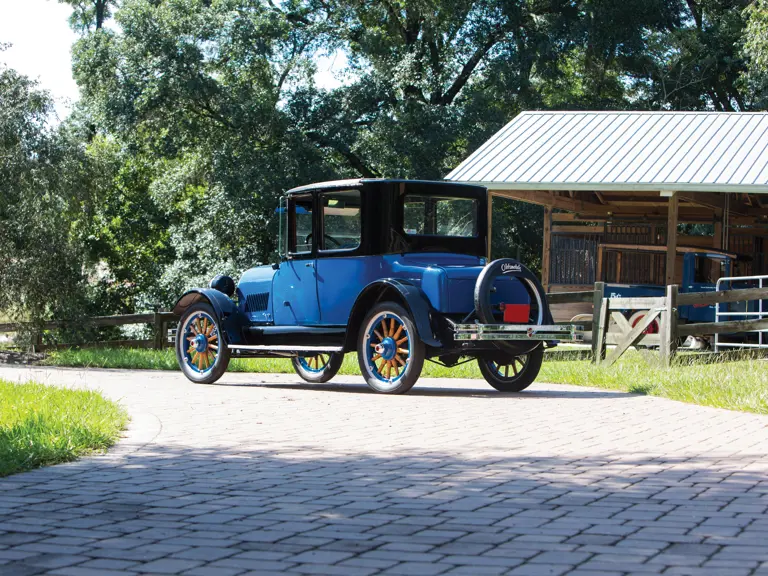
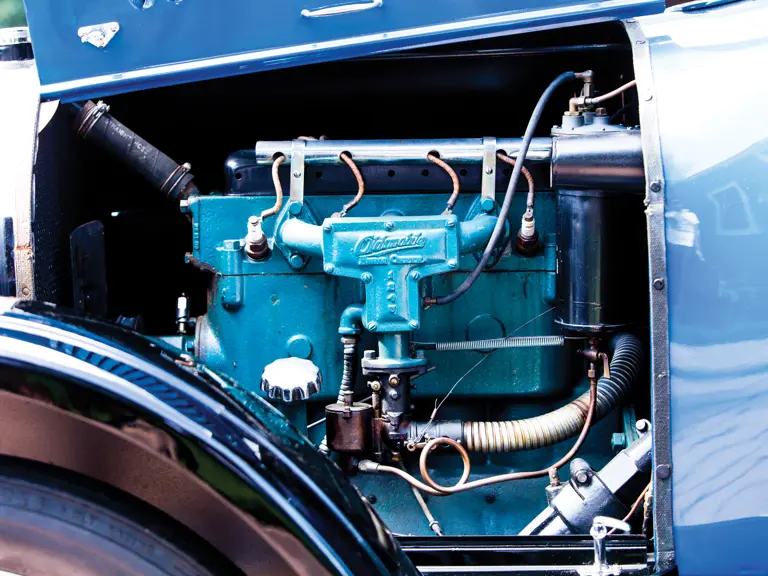
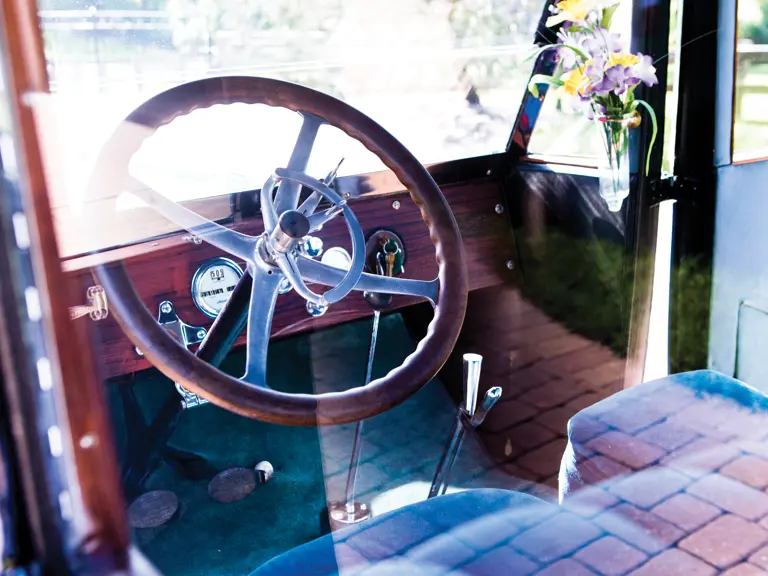
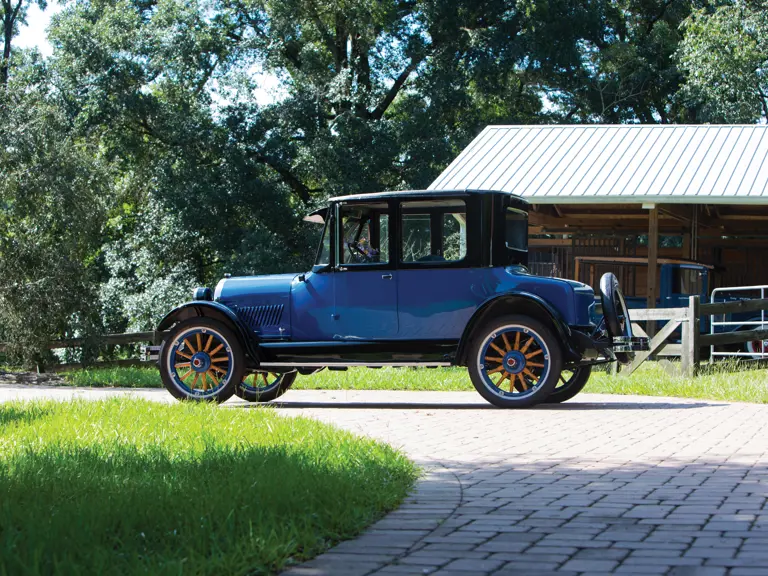
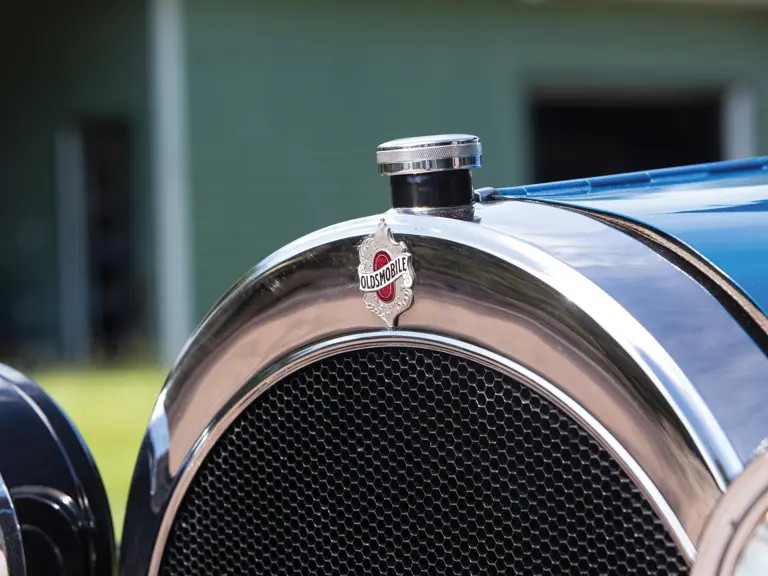
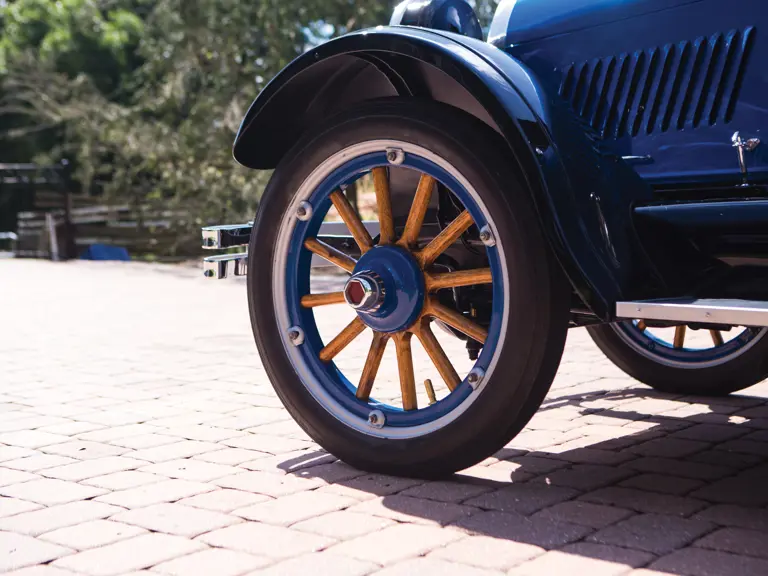
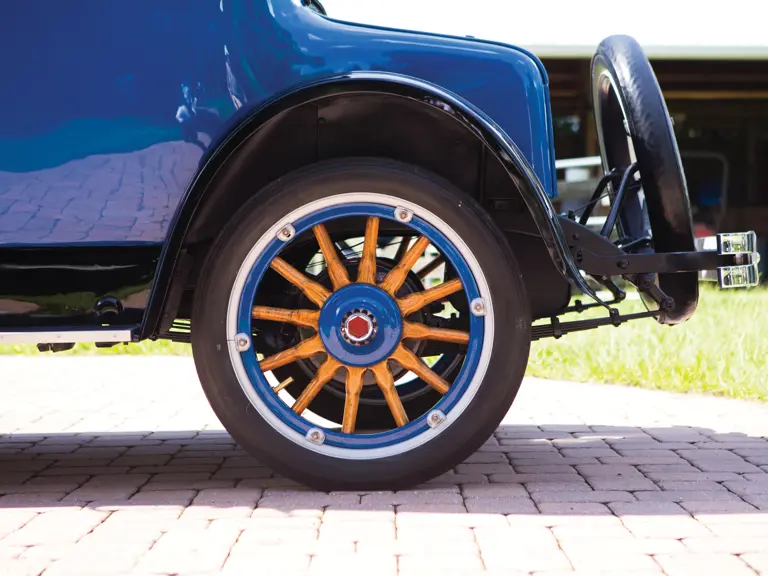

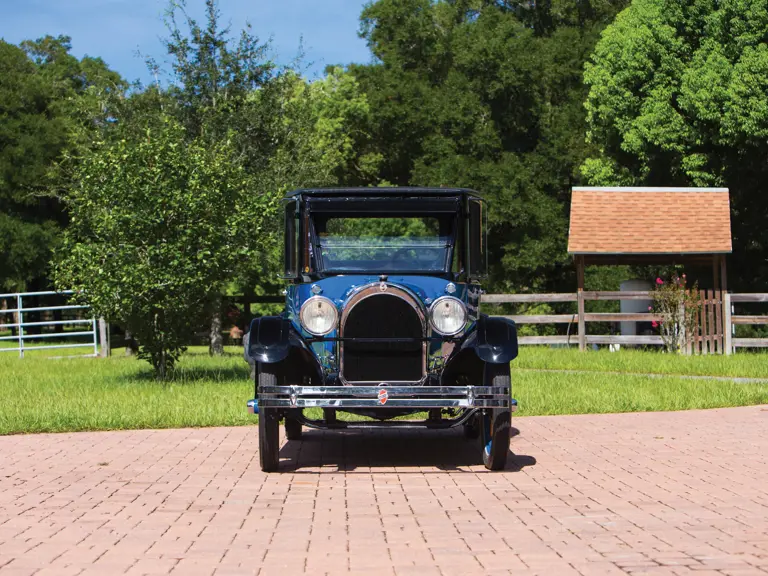
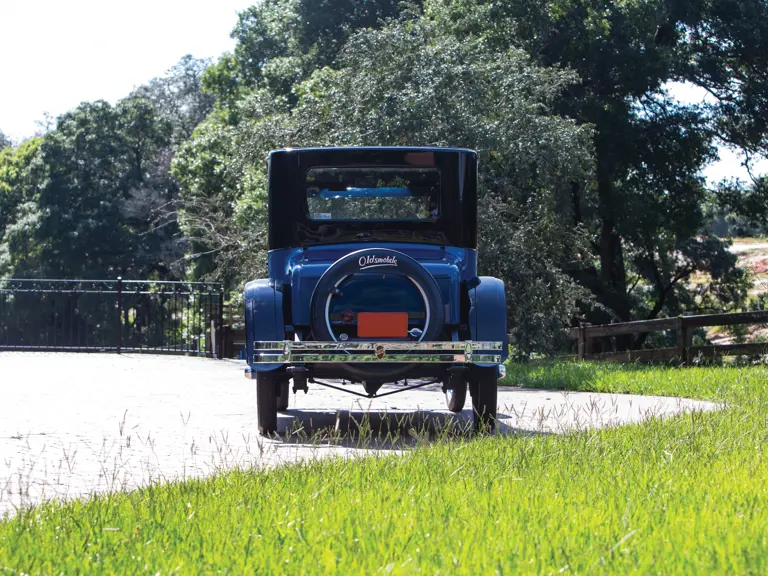
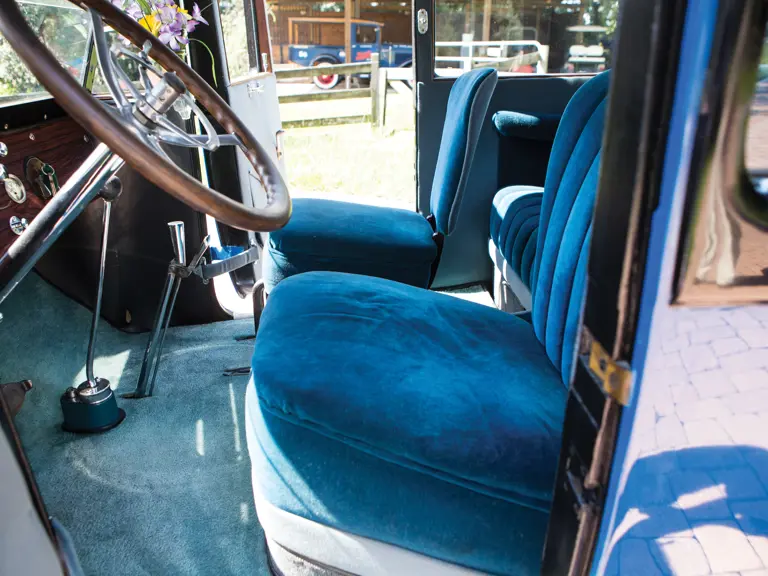
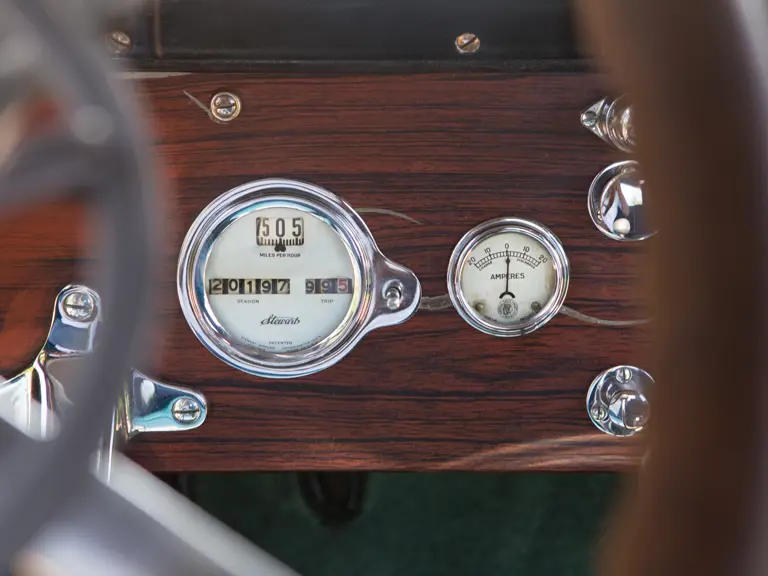
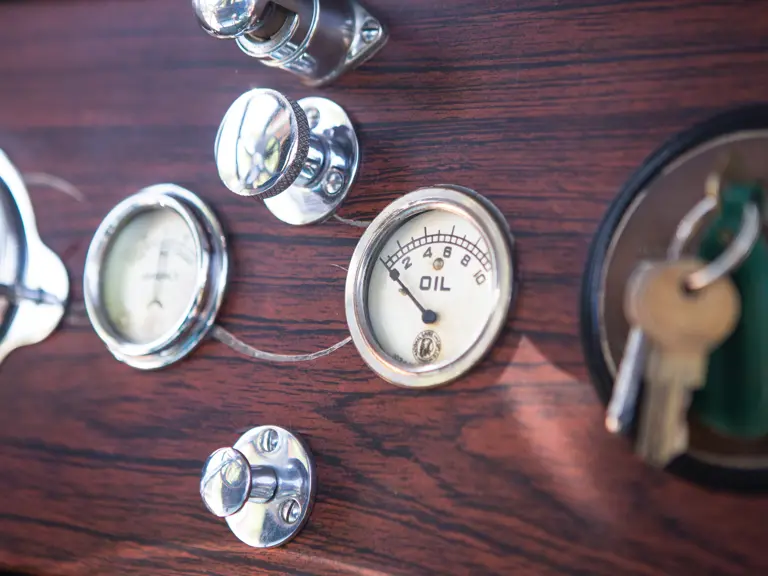
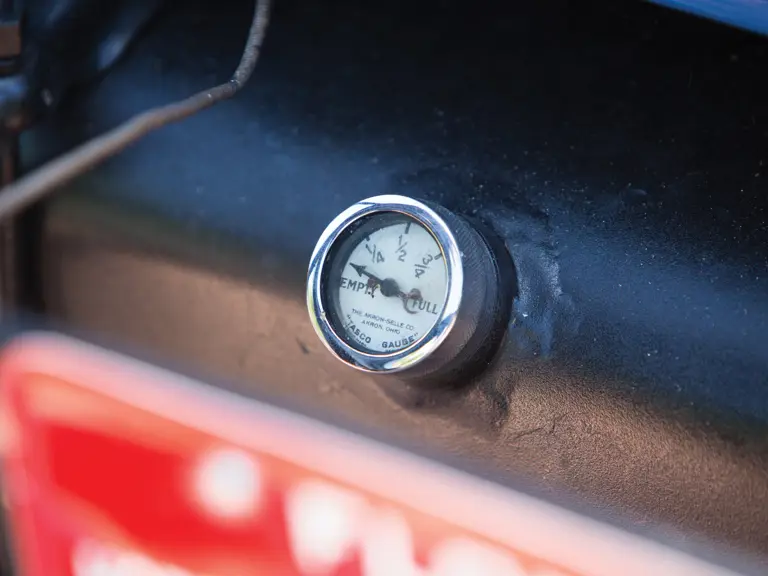

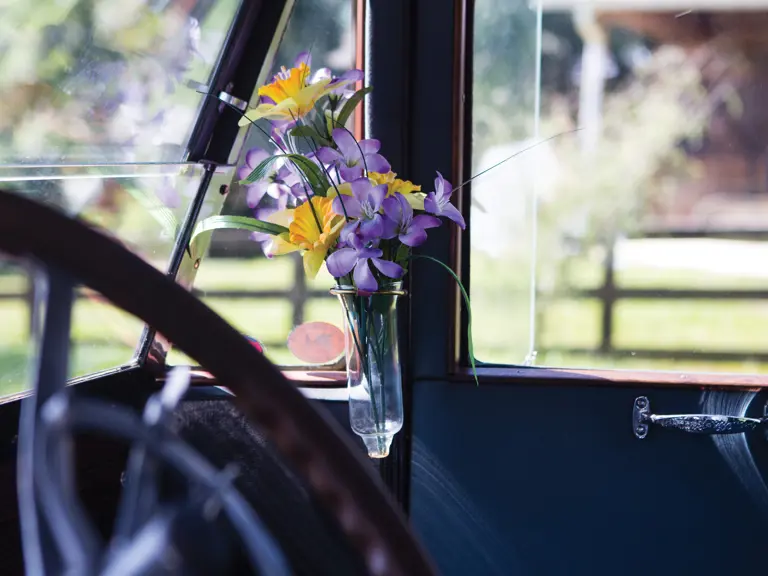

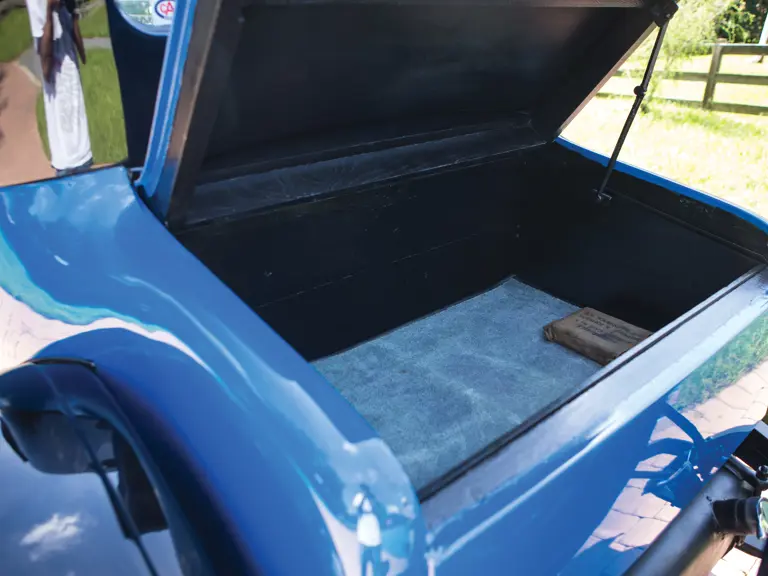

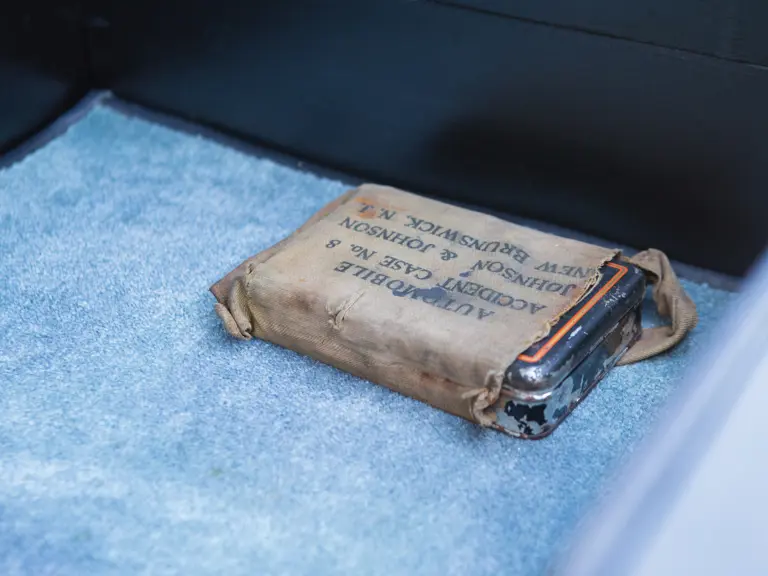
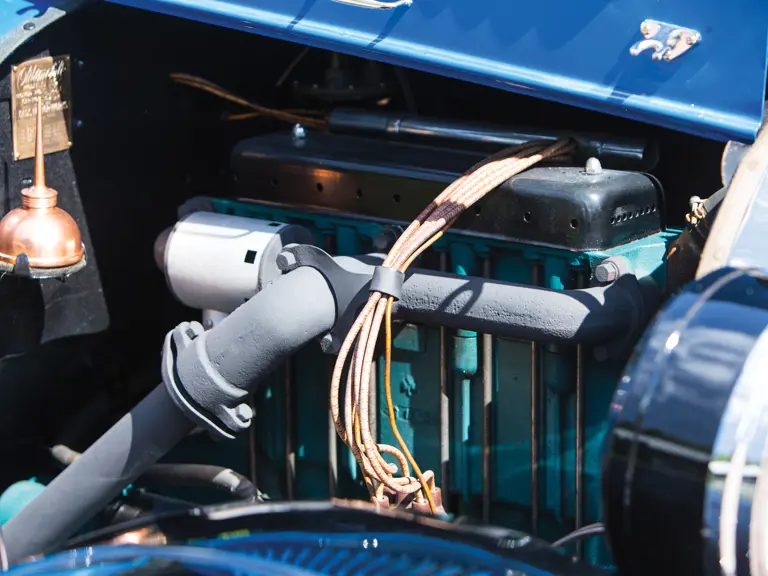
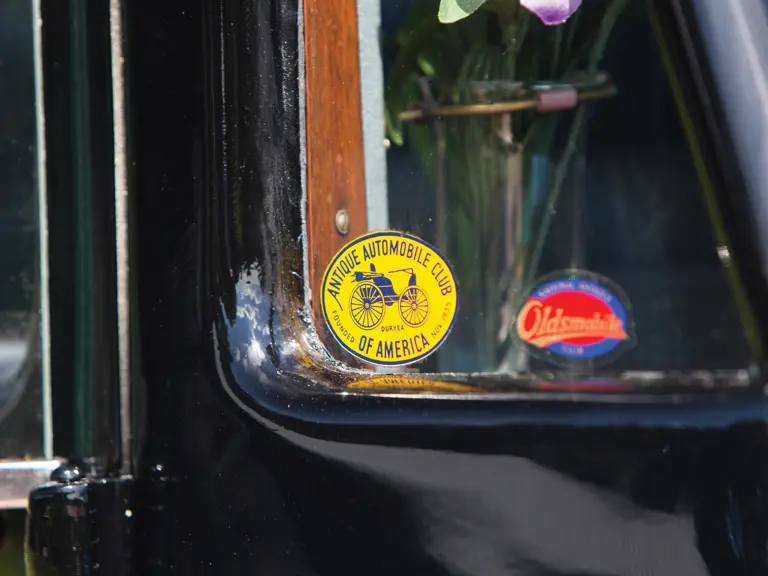
 | Hershey, Pennsylvania
| Hershey, Pennsylvania
